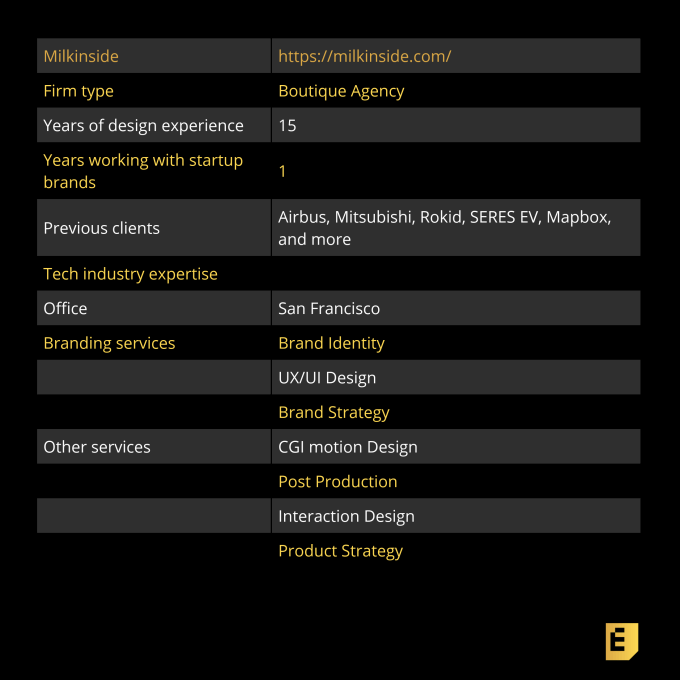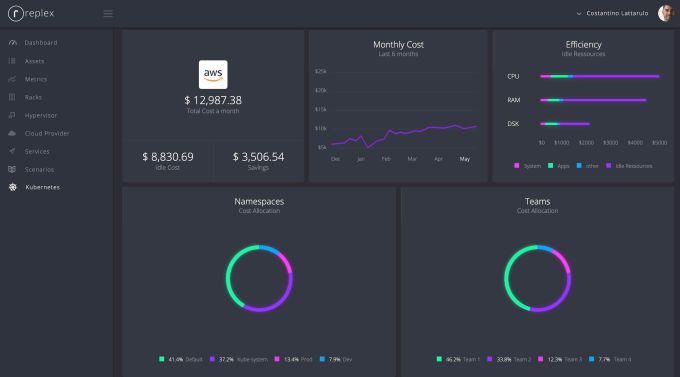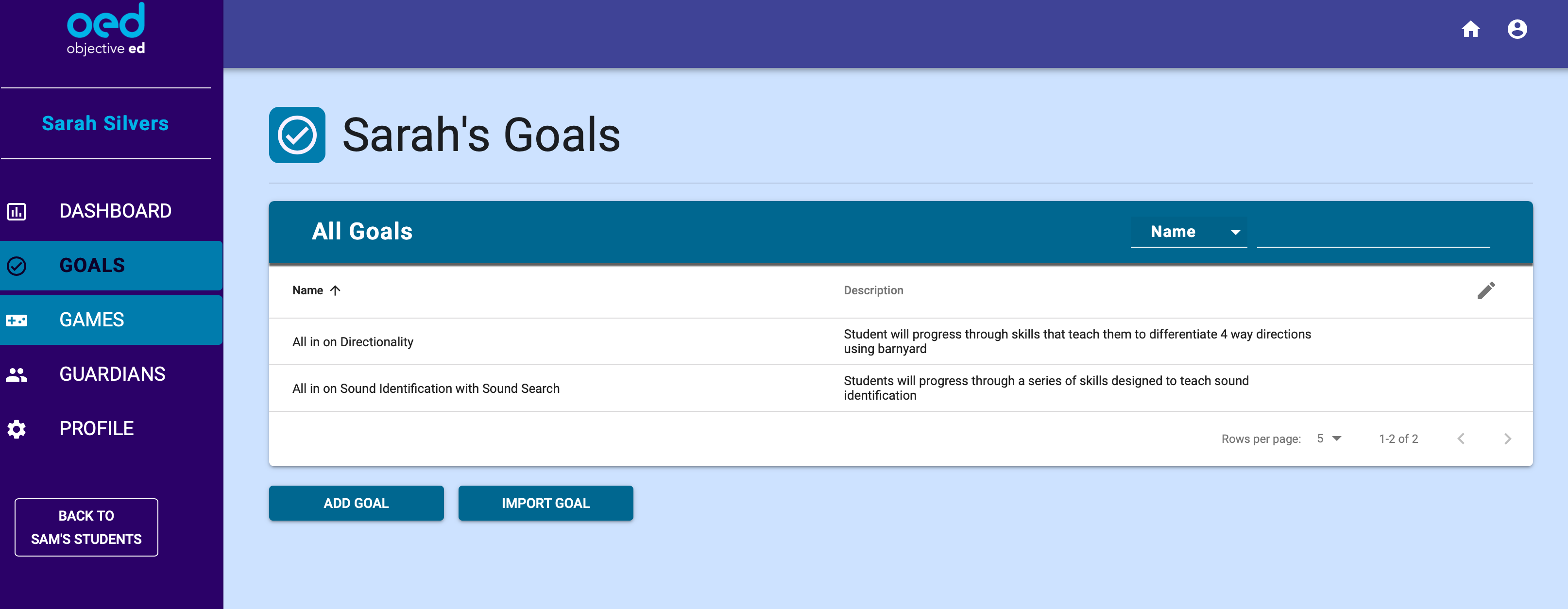A year after outcry, carriers are finally stopping sale of location data, letters to FCC show
Reports emerged a year ago that all the major cellular carriers in the U.S. were selling location data to third-party companies, which in turn sold them to pretty much anyone willing to pay. New letters published by the FCC show that despite a year of scrutiny and anger, the carriers have only recently put an end to this practice.
We already knew that the carriers, like many large companies, simply could not be trusted. In January it was clear that promises to immediately “shut down,” “terminate” or “take steps to stop” the location-selling side business were, shall we say, on the empty side. Kind of like their assurances that these services were closely monitored — no one seems to have bothered actually checking whether the third-party resellers were obtaining the required consent before sharing location data.
Similarly, the carriers took their time shutting down the arrangements they had in place, and communication on the process has been infrequent and inadequate.
FCC Commissioner Jessica Rosenworcel has been particularly frustrated by the foot-dragging and lack of communication on this issue (by companies and the commission).
“The FCC has been totally silent about press reports that for a few hundred dollars shady middlemen can sell your location within a few hundred meters based on your wireless phone data. That’s unacceptable,” she wrote in a statement posted today.
To provide a bit of closure, she decided to publish letters (PDF) from the major carriers explaining their current positions. Fortunately it’s good news. Here’s the gist:
T-Mobile swiftly made promises last May, and in June of 2018, CEO John Legere said in a tweet that he “personally evaluated this issue,” and pledged that the company “will not sell customer location data to shady middlemen.”
That seems to have been before “T-Mobile undertook an evaluation last summer of whether to retain or restructure its location aggregator program… Ultimately, we decided to terminate it.” That phased termination took place over the next half a year, finishing only in March of 2019.
AT&T immediately suspended access to location data by the offending company, Securus, but continued providing it to others. One hopes they at least began auditing properly. Almost a year later, the company said in its letter to Commissioner Rosenworcel that “in light of the press report to which you refer… we decided in January 2019 to accelerate our phase-out of these services. As of March 29, 2019, AT&T stopped sharing any AT&T customer location data with location aggregators and LBS providers.”
Sprint said shortly after the initial reports that it was in the “process of terminating its current contracts with data aggregators to whom we provide location data.” That process sure seems to have been a long one:
As of May 31, 2019, Sprint will no longer contract with any location aggregators to provide LBS. Sprint anticipates that after May 31. 2019, it may provide LBS services directly to customers like those described above [i.e. roadside assistance], but there are no firm plans at this time.
Verizon (the parent company of TechCrunch) managed to kill its contracts with all-purpose aggregators LocationSmart and Zumigo in November of 2018… except for a specific use case through the former to provide roadside assistance services during the winter. That agreement ended in March.
It’s taken some time, but the carriers seem to have finally followed through on shutting down the programs through which they resold customer location data. All took care to mention at some point the practical and helpful use cases of such programs, but failed to detail the apparent lack of oversight with which they were conducted. The responsibility to properly vet customers and collect mobile user consent seems to have been fully ceded to the resellers, who as last year’s reports showed, did nothing of the kind.
Location data is obviously valuable to consumers and many services can and should be able to request it — from those consumers. No one is arguing otherwise. But this important data was clearly being irresponsibly handled by the carriers, and it is probably right that the location aggregation business gets a hard stop and not a band-aid. We’ll likely see new businesses and arrangements appearing soon — but you can be sure that these too will require close monitoring to make sure the carriers don’t allow them to get out of hand… again.
Powered by WPeMatico
How startups can use Amazon’s SEO best practices to dominate new shopping verticals
Amazon dominates the top ranking positions of Google for tens of thousands of ecommerce queries, but there are plenty of products in newer shopping categories where Amazon has not yet achieved SEO supremacy. Retailers in nascent verticals have an opportunity to follow Amazon’s SEO playbook and become the default ranking ecommerce website.
Achieving this success can be done purely by focusing on on-page SEO without the need to build a brand and a backlink portfolio that rivals Amazon.
For those unfamiliar with mechanisms of SEO, there are essentially two streams of SEO tactics
- On-page SEO – This is anything to do with optimizing an actual page or website for maximum SEO visibility. Within this bucket will fall efforts such as the content of a page, metadata, internal links, URL/folder names, and even things like images.
- Off-page SEO – A key component of Google’s algorithm is the quality and sometimes quantity of the links from external sites that point to a page or website. At a high level the better backlinks a page or website has the more authority the page has to rank in search.
On-page SEO teardown
Delving into just their on-page SEO, their tactics can be divided into four distinct areas which we will go through in detail.
If you are following along with this process, make sure to log out of your Amazon account or open up an incognito window. Google only views the logged out version of the site, so all of Amazon’s SEO efforts are focused there.
Powered by WPeMatico
Fiverr files to go public, reports revenue of $75.5M and a net loss of $36.1M for 2018
Freelance marketplace Fiverr has filed to go public on the New York Stock Exchange.
The company, which is headquartered in Tel Aviv, is losing money — its net losses grew from $19.3 million in 2017 to $36.1 million in 2018. At the same time, revenue grew by nearly 45%, from $52.1 million to $75.5 million.
“Our mission is to change how the world works together,” Fiverr says in the filing. “We started with the simple idea that people should be able to buy and sell digital services in the same fashion as physical goods on an e-commerce platform. On that basis, we set out to design a digital marketplace that is built with a comprehensive SKU-like services catalog and an efficient search, find and order process that mirrors a typical e-commerce transaction.”
Fiverr was founded in 2010 and, thanks in part to controversial marketing, is seen as a key player in the gig economy. It says it has facilitated more than 50 million transactions between 5.5 million buyers and 830,000 freelancers (who sell services like logo design, video creation and editing, website development and blog writing).
The company says its advantages include the breadth of the marketplace and a network effect where the number and success of buyers and freelancers on the site draws more buyers and freelancers. It also says its marketplace can be easily scaled up as it adds more freelancers from around the world.
As for risk factors, the filing points to the need to continue growing the community, the possibility that the overall freelance market may not grow as quickly as the company expects and he aforementioned history of losses.
Fiverr previously raised $111 million in venture funding, according to Crunchbase, from Bessemer Venture Partners, Accel, Square Peg Capital, Qumra Capital and others. It’s also made some acquisitions in recent years, including content marketing marketplace ClearVoice and And Co, which made software for freelancers.
Powered by WPeMatico
ObjectiveEd is building a better digital curriculum for vision-impaired kids
Children with vision impairments struggle to get a solid K-12 education for a lot of reasons — so the more tools their teachers have to impart basic skills and concepts, the better. ObjectiveEd is a startup that aims to empower teachers and kids with a suite of learning games accessible to all vision levels, along with tools to track and promote progress.
Some of the reasons why vision-impaired kids don’t get the education they deserve are obvious, for example that reading and writing are slower and more difficult for them than for sighted kids. But other reasons are less obvious, for example that teachers have limited time and resources to dedicate to these special needs students when their overcrowded classrooms are already demanding more than they can provide.
Technology isn’t the solution, but it has to be part of the solution, because technology is so empowering and kids take to it naturally. There’s no reason a blind 8-year-old can’t also be a digital native like her peers, and that presents an opportunity for teachers and parents both.
This opportunity is being pursued by Marty Schultz, who has spent the last few years as head of a company that makes games targeted at the visually impaired audience, and in the process saw the potential for adapting that work for more directly educational purposes.
 “Children don’t like studying and don’t like doing their homework,” he told me. “They just want to play video games.”
“Children don’t like studying and don’t like doing their homework,” he told me. “They just want to play video games.”
It’s hard to argue with that. True of many adults too, for that matter. But as Schultz points out, this is something educators have realized in recent years and turned to everyone’s benefit.
“Almost all regular education teachers use educational digital games in their classrooms and about 20% use it every day,” he explained. “Most teachers report an increase in student engagement when using educational video games. Gamification works because students own their learning. They have the freedom to fail, and try again, until they succeed. By doing this, students discover intrinsic motivation and learn without realizing it.”
Having learned to type, point and click, do geometry and identify countries via games, I’m a product of this same process, and many of you likely are as well. It’s a great way for kids to teach themselves. But how many of those games would be playable by a kid with vision impairment or blindness? Practically none.
Held back
It turns out that these kids, like others with disabilities, are frequently left behind as the rising technology tide lifts everyone else’s boats. The fact is it’s difficult and time-consuming to create accessible games that target things like Braille literacy and blind navigation of rooms and streets, so developers haven’t been able to do so profitably and teachers are left to themselves to figure out how to jury-rig existing resources or, more likely, fall back on tried and true methods like printed worksheets, in-person instruction and spoken testing.
And because teacher time is limited and instructors trained in vision-impaired learning are thin on the ground, these outdated methods are also difficult to cater to an individual student’s needs. For example a kid may be great at math but lack directionality skills. You need to draw up an “individual education plan” (IEP) explaining (among other things) this and what steps need to be taken to improve, then track those improvements. It’s time-consuming and hard! The idea behind ObjectiveEd is to create both games that teach these basic skills and a platform to track and document progress as well as adjust the lessons to the individual.
How this might work can be seen in a game like Barnyard, which like all of ObjectiveEd’s games has been designed to be playable by blind, low-vision or fully sighted kids. The game has the student finding an animal in a big pen, then dragging it in a specified direction. The easiest levels might be left and right, then move on to cardinal directions, then up to clock directions or even degrees.
“If the IEP objective is ‘Child will understand left versus right and succeed at performing this task 90% of the time,’ the teacher will first introduce these concepts and work with the child during their weekly session,” Schultz said. That’s the kind of hands-on instruction they already get. “The child plays Barnyard in school and at home, swiping left and right, winning points and getting encouragement, all week long. The dashboard shows how much time each child is playing, how often, and their level of success.”
That’s great for documentation for the mandated IEP paperwork, and difficulty can be changed on the fly as well:
“The teacher can set the game to get harder or faster automatically, or move onto the next level of complexity automatically (such as never repeating the prompt when the child hesitates). Or the teacher can maintain the child at the current level and advance the child when she thinks it’s appropriate.”
This isn’t meant to be a full-on K-12 education in a tablet app. But it helps close the gap between kids who can play Mavis Beacon or whatever on school computers and vision-impaired kids who can’t.
Practical measures
Importantly, the platform is not being developed without expert help — or, as is actually very important, without a business plan.
“We’ve developed relationships with several schools for the blind as well as leaders in the community to build educational games that tackle important skills,” Schultz said. “We work with both university researchers and experienced Teachers of Visually Impaired students, and Certified Orientation and Mobility specialists. We were surprised at how many different skills and curriculum subjects that teachers really need.”
Based on their suggestions, for instance, the company has built two games to teach iPhone gestures and the accessibility VoiceOver rotor. This may be a proprietary technology from Apple, but it’s something these kids need to know how to use, just like they need to know how to run a Google search, use a mouse without being able to see the screen, and other common computing tasks. Why not learn it in a game like the other stuff?
 Making technological advances is all well and good, but doing so while building a sustainable business is another thing many education startups have failed to address. Fortunately, public school systems actually have significant money set aside specifically for students with special needs, and products that improve education outcomes are actively sought and paid for. These state and federal funds can’t be siphoned off to use on the rest of the class, so if there’s nothing to spend them on, they go unused.
Making technological advances is all well and good, but doing so while building a sustainable business is another thing many education startups have failed to address. Fortunately, public school systems actually have significant money set aside specifically for students with special needs, and products that improve education outcomes are actively sought and paid for. These state and federal funds can’t be siphoned off to use on the rest of the class, so if there’s nothing to spend them on, they go unused.
ObjectiveEd has the benefit of being easily deployed without much specialty hardware or software. It runs on iPads, which are fairly common in schools and homes, and the dashboard is a simple web one. Although it may eventually interface with specialty hardware like Braille readers, it’s not necessary for many of the games and lessons, so that lowers the deployment bar as well.
The plan for now is to finalize and test the interface and build out the games library — ObjectiveEd isn’t quite ready to launch, but it’s important to build it with constant feedback from students, teachers and experts. With luck, in a year or two the visually-impaired youngsters at a school near you might have a fun new platform to learn and play with.
“ObjectiveEd exists to help teachers, parents and schools adapt to this new era of gamified learning for students with disabilities, starting with blind and visually impaired students,” Schultz said. “We firmly believe that well-designed software combined with ‘off-the-shelf’ technology makes all this possible. The low cost of technology has truly revolutionized the possibilities for improving education.”
Powered by WPeMatico
Rivals in gaming, Microsoft and Sony team up on cloud services
For the last two decades, Sony and Microsoft’s gaming divisions have been locked in all-out war against one another: on price, on hardware, on franchises, on exclusives… you name it. But it seems they’ve set their enmity aside temporarily that they might better prevent that filthy casual, Google, from joining the fray.
The official team-up, documented in a memorandum of understanding, was announced today, though details are few. But this is clear enough:
The two companies will explore joint development of future cloud solutions in Microsoft Azure to support their respective game and content-streaming services. In addition, the two companies will explore the use of current Microsoft Azure datacenter-based solutions for Sony’s game and content-streaming services.
Of course there is no doubt that Sony could have gone with a number of other cloud services for its gaming-on-demand services. It already runs one, PlayStation Now, but the market is expected to expand over the next few years much like cord cutters have driven traditional TV and movie watchers to Netflix and other streaming services. Expansion would surely prove expensive and complicated.
The most salient challenger is likely Google and its new Stadia game streaming service, which of course has a huge advantage in its global presence, brand recognition and unique entry points: search and YouTube. The possibility of searching for a game and being able to play it literally five seconds later is an amazing one, and really only something Google can pull off right now.
That makes Google a threat. And Microsoft and Sony have enough threats already, what with the two of them making every exclusive and chip partnership count, the resurgence of Nintendo with the immensely popular Switch and the complex new PC-and-mobile-focused gaming market making consoles look outdated. Apple Arcade exists, too, but I don’t know that anyone is worried about it, exactly.
Perhaps there was a call made on the special direct line each has to the other, where they just said “truce… until we reduce Google Stadia to rubble and salt the earth. Also Nvidia maybe.”
We don’t actually have to imagine, though. As Sony President and CEO Kenichiro Yoshida noted in the announcement: “For many years, Microsoft has been a key business partner for us, though of course the two companies have also been competing in some areas. I believe that our joint development of future cloud solutions will contribute greatly to the advancement of interactive content.”
Sony doesn’t lack technical chops, or the software necessary to pull off a streaming service — but it may simply make more sense to deploy via Microsoft’s Azure than bring its own distribution systems up to par. No doubt Microsoft is happy to welcome a customer as large as Sony to its stable, and any awkwardness from the two competing elsewhere is secondary to that. Google is a more existential competitor in many ways, so it makes sense that Microsoft would favor partnering with a partial rival against it.
Sony has long been in this boat itself. Its image sensors and camera technology can be found in phones and DSLRs that compete with its own products — but the revenue and feedback it has built up as a result have let it maintain its dominance.
Speaking of which, the two companies also plan to collaborate on imaging, combining Sony’s sensor tech with Microsoft’s AI work. This is bound to find its way to applications in robotics and autonomous vehicles, though competition is fierce there, and neither company has a real branded presence. Perhaps they aim to change that… together.
Powered by WPeMatico
Verified Expert Brand Designer: Milkinside
Gleb Kuznetsov refuses to settle for less. After spending years leading product design for startups and corporate clients, Gleb started a boutique branding agency, Milkinside, that helps clients translate new technologies into useful products.
Gleb and his team of experienced creators are committed to serving the end user, which is why they love taking products from zero to launch. Their services are expensive, partly due to their expertise in product development, motion graphic design and animation, but we spoke to Gleb about why Milkinside is more than just a branding agency and how they strive to be the best.
Why Gleb created Milkinside:
“I wanted to create a team that wasn’t just an agency that companies could contract, but a partner that would support the client’s product development from beginning to end. Everything from the product narrative, product branding, product design, UI user experience, motion design, design languages, motion design languages, etc. I looked around the industry and didn’t see what I was envisioning so I created my dream company, Milkinside, in 2018.”
“Gleb has one of those rare skills that can make ordinary, plain parts of a design come to life and doing so in a beautiful and useful way. Always pushing the boundaries.” Jacob Hvid, Stockholm, Sweden, CEO and Co-founder at Abundo
On common founder mistakes:
“There are a lot of founders who believe they created useful technology and are absolutely certain people will use it. But everything is moot if users aren’t able to understand your product narrative and how it fits into their lives. Establishing a product narrative at an early stage is essential. A lot of founders will try to create a minimum viable product as soon as possible, but they aren’t thinking about the narrative, branding, the product design, and how everything comes together.”

Below, you’ll find the rest of the founder reviews, the full interview, and more details like pricing and fee structures. This profile is part of our ongoing series covering startup brand designers and agencies with whom founders love to work, based on this survey and our own research. The survey is open indefinitely, so please fill it out if you haven’t already.
Interview with Milkinside Founder and Director of Product Design Gleb Kuznetsov

Yvonne Leow: Can you tell me a little bit about yourself and how you got into the world of branding and design?
Gleb Kuznetsov: I was 10 years old when I started programming and learning different coding languages. At the age of 15, I shifted to design and became pretty passionate about what could be possible in the digital world. I worked as a product designer for 15 years before I started Milkinside. I worked for big consumer product companies across various verticals and platforms. When I was a chief design officer at a startup, I was responsible for everything from the product design, UI design, branding, advertising to producing product explainer videos.
Powered by WPeMatico
Samsung’s 5G phone hits Verizon, Sprint getting two 5G devices this month
With 5G, when it rains, it pours. A few hours after Verizon officially started selling the Samsung Galaxy S10 5G, Sprint announced that it will be offering two 5G devices for its network by the end of the month.
For now, it still feels like manufacturers are putting the cart before the horse here. There’s little question that 5G will become ubiquitous in the next few years, but actual opportunities to access the technology are still pretty scarce.
Among U.S. carriers, Verizon (our parent company’s parent company) has been the most aggressive. Fitting then, that the company is first to market with the Galaxy S10 5G. Of course, all of these devices will default to 4G when there’s no 5G to be found, which is going to be the case more often than not for a while.
Verizon’s 5G is currently available in select markets, including Chicago and Minneapolis. That number is set to balloon to 20 locales before year’s end, including, Atlanta, Boston, Charlotte, Cincinnati, Cleveland, Columbus, Dallas, Des Moines, Denver, Detroit, Houston, Indianapolis, Kansas City, Little Rock, Memphis, Phoenix, Providence, San Diego, Salt Lake City and Washington, DC.
Sprint, meanwhile, has promised to flip on 5G in nine markets “in the coming weeks.” The list includes parts of Atlanta, Dallas, Houston and Kansas City, and then locations in Los Angeles, New York City, Phoenix and Washington, D.C.
To celebrate, the network will be offering two 5G devices this month. The LG V50 ThinQ and HTC 5G Hub will hit Sprint stores on May 31.
Powered by WPeMatico
MultiVu raises $7M seed round for its next-gen 3D sensor
MultiVu, a Tel Aviv-based startup that is developing a new 3D imaging solution that only relies on a single sensor and some deep learning smarts, today announced that it has raised a $7 million seed round. The round was led by crowdfunding platform OurCrowd, Cardumen Capital and Hong Kong’s Junson Capital.
Tel Aviv University’s TAU Technology Innovation Momentum Fund supported some of the earlier development of MultiVu’s core technology, which came out of Prof. David Mendlovic’s lab at the university. Mendlovic previously co-founded smartphone camera startup Corephotonics, which was recently acquired by Samsung.
The promise of MultiVu’s sensor is that it can offer 3D imaging with a single-lens camera instead of the usual two-sensor setup. This single sensor can extract depth and color data in a single shot.
This makes for a more compact setup and, by extension, a more affordable solution as it requires fewer components. All of this is powered by the company’s patented light field technology.
Currently, the team is focusing on using the sensor for face authentication in phones and other small devices. That’s obviously a growing market, but there are also plenty of other applications for small 3D sensors, ranging from other security use cases to sensors for self-driving cars.
“The technology, which passed the proof-of-concept stage, will bring 3D Face Authentication and affordable 3D imaging to the mobile, automotive, industrial and medical markets,” MultiVu CEO Doron Nevo said. “We are excited to be given the opportunity to commercialize this technology.”
Right now, though, the team is mostly focusing on bringing its sensor to market. The company will use the new funding for that, as well as new marketing and business development activities.
“We are pleased to invest in the future of 3D sensor technologies and believe that MultiVu will penetrate markets, which until now could not take advantage of costly 3D imaging solutions,” said OurCrowd Senior Investment Partner Eli Nir. “We are proud to be investing in a third company founded by Prof. David Mendlovic (who just recently sold CorePhotonics to Samsung), managed by CEO Doron Nevo – a serial entrepreneur with proven successes and a superb team they have gathered around them.”
Powered by WPeMatico
Unveiling its latest cohort, Alchemist announces $4 million in funding for its enterprise accelerator
The enterprise software and services-focused accelerator Alchemist has raised $4 million in fresh financing from investors BASF and the Qatar Development Bank, just in time for its latest demo day unveiling 20 new companies.
Qatar and BASF join previous investors, including the venture firms Mayfield, Khosla Ventures, Foundation Capital, DFJ and USVP, and corporate investors like Cisco, Siemens and Juniper Networks.
While the roster of successes from Alchemist’s fund isn’t as lengthy as Y Combinator, the accelerator program has launched the likes of the quantum computing upstart Rigetti, the soft-launch developer tool LaunchDarkly and drone startup Matternet .
Some (personal) highlights of the latest cohort include:
- Bayware: Helmed by a former head of software-defined networking from Cisco, the company is pitching a tool that makes creating networks in multi-cloud environments as easy as copying and pasting.
- MotorCortex.AI: Co-founded by a Stanford engineering professor and a Carnegie Mellon roboticist, the company is using computer vision, machine learning and robotics to create a fruit packer for packaging lines. Starting with avocados, the company is aiming to tackle the entire packaging side of pick and pack in logistics.
- Resilio: With claims of a 96% effectiveness rate and $35,000 in annual recurring revenue with another $1 million in the pipeline, Resilio is already seeing companies embrace its mobile app that uses a phone’s camera to track stress levels and application-based prompts on how to lower it, according to Alchemist.
- Operant Networks: It’s a long-held belief (of mine) that if computing networks are already irrevocably compromised, the best thing that companies and individuals can do is just encrypt the hell out of their data. Apparently Operant agrees with me. The company is claiming 50% time savings with this approach, and have booked $1.9 million in 2019 as proof, according to Alchemist.
- HPC Hub: HPC Hub wants to democratize access to supercomputers by overlaying a virtualization layer and pre-installed software on underutilized super computers to give more companies and researchers easier access to machines… and they’ve booked $92,000 worth of annual recurring revenue.
- DinoPlusAI: This chip developer is designing a low latency chip for artificial intelligence applications, reducing latency by 12 times over a competing Nvidia chip, according to the company. DinoPlusAI sees applications for its tech in things like real-time AI markets and autonomous driving. Its team is led by a designer from Cadence and Broadcom and the company already has $8 million in letters of intent signed, according to Alchemist.
- Aero Systems West: Co-founders from the Air Force’s Research Labs and MIT are aiming to take humans out of drone operations and maintenance. The company contends that for every hour of flight time, drones require seven hours of maintenance and check ups. Aero Systems aims to reduce that by using remote analytics, self-inspection, autonomous deployment and automated maintenance to take humans out of the drone business.
Watch a live stream of Alchemist’s demo day pitches, starting at 3PM, here.
Powered by WPeMatico
Replex gets $2.45M seed round to help track cloud native spend
Replex wants to help track cloud spending, but with a cloud native twist, and today it announced a $2.45 million seed round. The company previous raised $1.68 million in 2017 for a total of $4.15 million so far.
As companies shift to a cloud native environment, and move ever more quickly, it is increasingly important to get visibility into how development and operations teams are using resources in the cloud. Replex is designed to give more visibility into spending and to help optimize the container environment in the most economical way.
Company CEO and co-founder Patrick Kirchhoff says the product is about controlling spending in a cloud native context. “The Replex platform enables operators, finance and IT managers to see who spends what. We allow them then to right-size clusters, pods and container sizes for optimal results, and they are able to control the cost, manage chargebacks and find [optimal] capacity,” he explained.

Replex cloud spending control panel. Screenshot: Replex
While there are variety of similar cloud cost control startups out there, Kirchoff says his company has been purpose built for cloud native environments and that is a key differentiating factor. “We see that the way organizations work has completely changed because with the move to cloud native infrastructure, teams within the business lines are now able to provision infrastructure on their own. Central IT departments still need to control costs and govern these resources, but they don’t have the tools to do that anymore because the existing tools are built on architectures for traditional infrastructure, and not for the cloud native approach,” he said.
Kirchoff says that developers tend to over provision just to be on the safe side, but using data from Replex, customers can figure out the optimal amount to provision for a particular workload, work with development teams, and that can save money in the long run.
Investors across the two rounds include Entrepreneurs Investment Fund, eValue, EnBW New Ventures, High-Tech Gruenderfonds (HTGF) and Technologiegruenderfonds Sachsen (TGFS). The company is currently participating in the Alchemist Accelerator . The latest round closed in December. The previous one in May 2017.
Powered by WPeMatico




